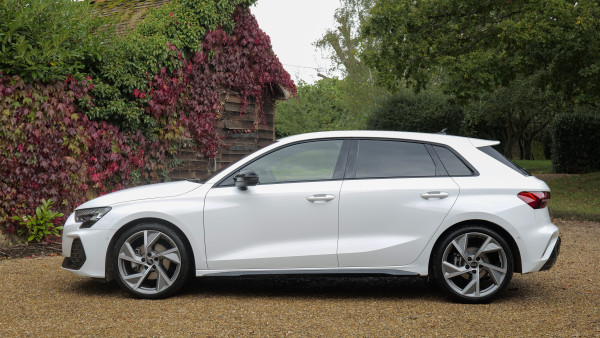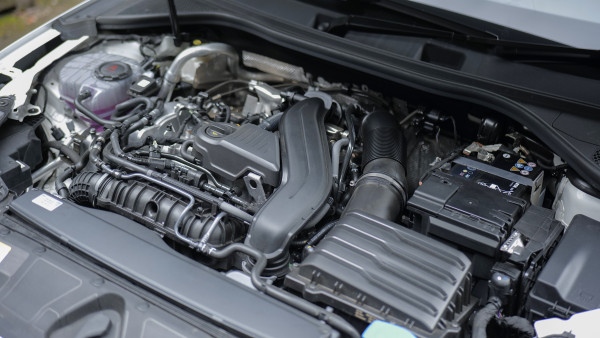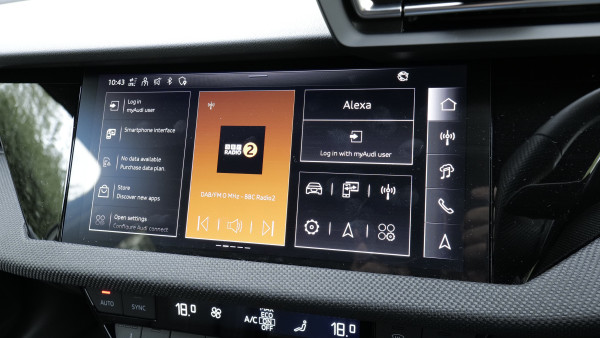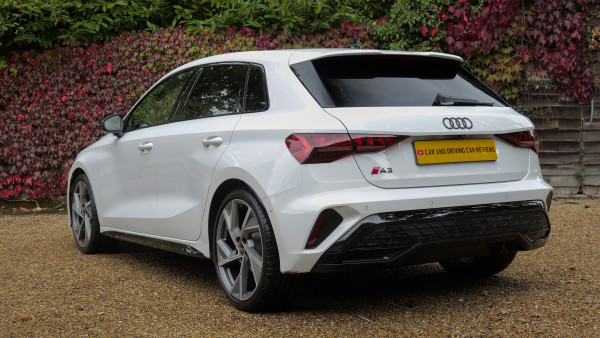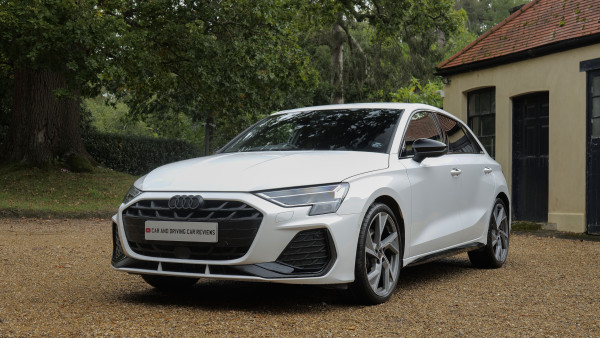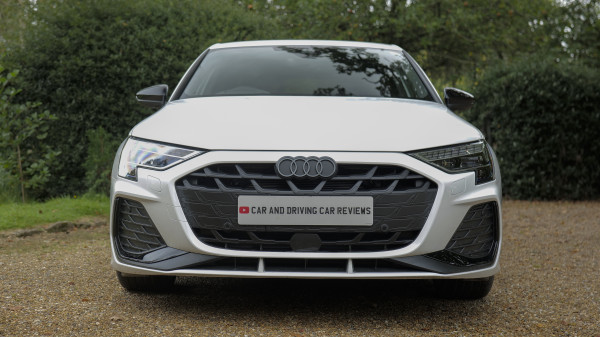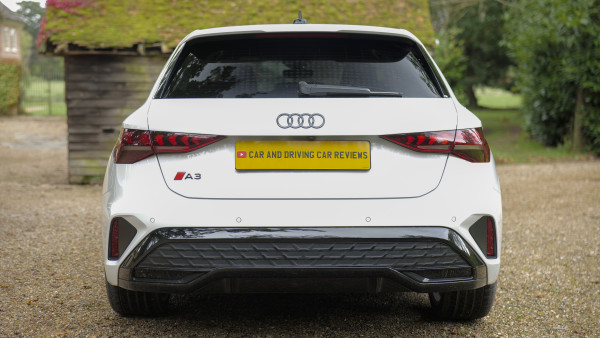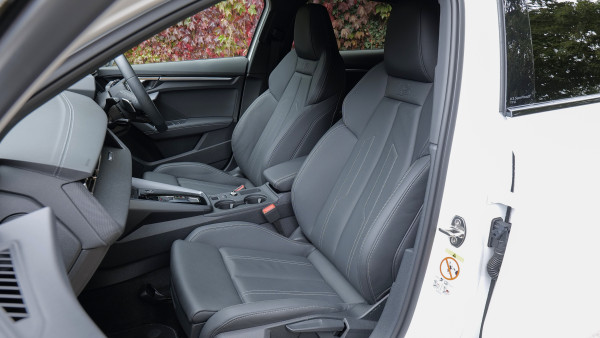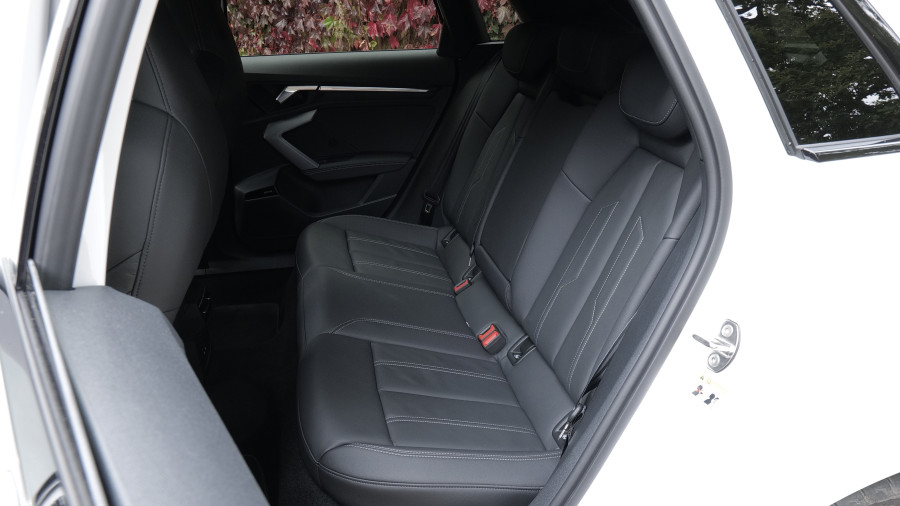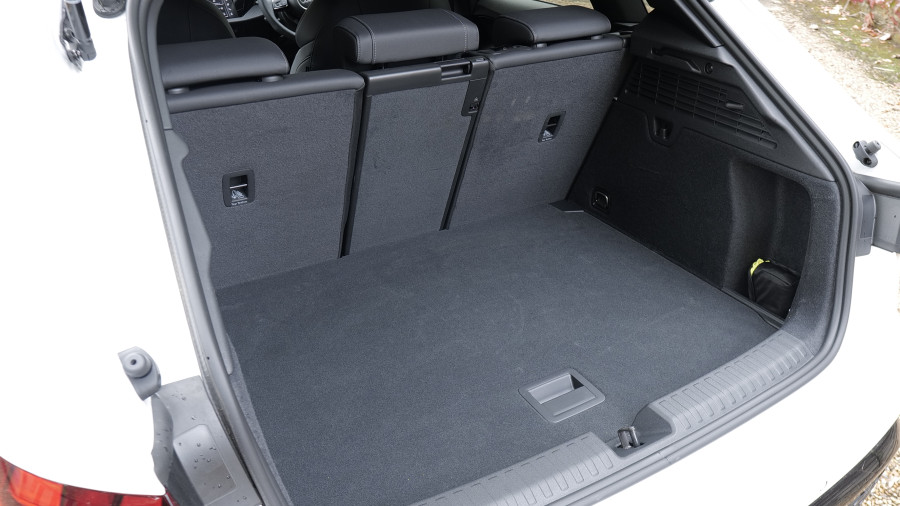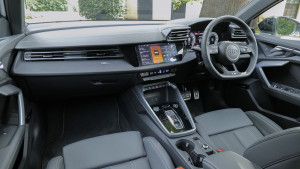By Jonathan Crouch
Introduction
The premium compact car. If that concept means anything to you, then it's the car we look at here, Audi's A3 Sportback, that might well come to mind. Back in 2020 in MK4 form, true to the brand's Vorsprung durch Technik philosophy, this model once again aimed to set fresh standards, incorporating a completely digitalised interior and cutting-edge infotainment, plus more unique light signatures, powerful engines and a suite of innovative assistance systems enveloped in a completely redesigned, yet immediately recognisable body. The result was a car that showed just how far things had progressed in this segment. So how does this pre-facelift MK4 A3 Sportback stack up as a used buy?
Models
5dr Family Hatchback (1.0 TFSI petrol / 1.5 TFSI petrol / 2.0 TFSI / 2.0 TDI) [Technik,Sport, S line, Vorsprung, S3, RS 3])
History
The Audi A3. It's a posh hatchback isn't it? Well yes, but it's also much more than that. It was the car that really established the premium compact class way back in 1996. By 2020, over 5 million sales on, this MK4 model aimed to re-define this segment once again, primarily with this Sportback hatch body style.
A quarter of a century ago when we first saw the A3 model line in its original 'Typ 8L' form, the idea of being able to move a car up-market in class and appeal without increasing its size was new and rather different. Cynics dismissed it as a way of dressing up ordinary family hatches and charging a lot more for them. Customers though, loved the idea and by the time the second generation 'Typ 8P'-series A3 arrived in 2003, BMW and Mercedes rivals had also arrived to swell the market. Initially, those two brands struggled to produce products good enough to overtake Audi and the result was that nearly a quarter of a million MK2 A3s were pounding global roads by the time the third generation 'Typ 8V' model arrived in the Autumn of 2012. It sold for nearly eight years, with a useful update in 2016, until this more cutting-edge 'Typ 8Y' MK4 model arrived in early 2020.
All of these designs were based on shared VW Group engineering. And shared parentage can be both a blessing and a curse. Certainly, it was an enormous advantage that this fourth generation car was founded almost entirely on what is generally recognised as the market's most thoroughly engineered and best quality volume brand family hatch, the eighth generation Volkswagen Golf. But the downside from Audi's point of view was that the same engineering, complete with evolved MQB platform, was also used by the latest versions of SEAT's Leon and Skoda's Octavia which, predictably, were thousands of pounds cheaper.
So why pay the extra, new or used, for Ingolstadt's idea of what a cutting-edge compact family hatch should be? Well, there are plenty of reasons why you might. Premium brand interpretations of any product don't tend to deliver anything fundamentally different from more affordable versions of the same thing. They just package it all in a more appealing way - which has been the secret of this model line's success and is the reason why by 2020, over 600,000 A3s pounded our country's roads. Most of them featured this five-door hatch body style, which had been known to A3 buyers as a 'Sportback' ever since 2004. By 2020, it no longer sold alongside a three-door hatch variant (which was a disappointment as that meant we didn't get another A3 Cabriolet), but there was a sharp-suited Saloon version for those who wanted an alternative and, of course, the usual hot hatch derivatives.
Whatever your choice of A3 body shape, you can expect it all embellished with the plushest, best connected and highest quality cabin the segment had to offer from this period - plus across the range, there was a full portfolio of cutting-edge engine tech, including both mild hybrid and plug-in powertrain options. This MK4 A3 Sportback sold in its original form until the beginning of 2024, when it received a facelift. It's the pre-facelift 2020-2023 versions of this model we look at here.
What You Get
Audi talks of the way that this fourth generation A3's styling had been 'revolutionised', something that designer Immo Redeker was very enthusiastic about. The MK4 range was primarily based around the five-door Sportback body shape - the only other option was a saloon - which was given a more athletic stance and a slight size increase.
Inside up-front, there was a more immersive style of ergonomic design for this fourth generation model - in the way the air vents combined with the instrument binnacle and the manner in which the centre screen and the re-designed climate controls just below were canted towards the driver. Much effort went in to visually emphasise the width and spaciousness of this cabin, most notably with precise horizontal lines and surfaces. Not all of it was smoke and mirrors; the seats were set a little lower to improve headroom, plus there was slightly more shoulder room too. And you're going to really like the quality and classy design on show here - things like the hexagonal contrasting stitching on the dash top and the striking line of vents on the passenger side, with a smart curved trim strip below.
Earlier, we mentioned the screens; here, they represent what Audi called a 'new level' of digital technology, the 10.25-inch Virtual Cockpit instrument binnacle display standardised and working in concert with the 10.1-inch 'MMI Navigation plus' centre stack monitor. This central screen was based on an 'MIB 3' modular infotainment platform that offered ten times the computing power of the previous set-up and had a vastly improved intuitive voice control system. Plus this MMI system was permanently connected to the internet, with high speed access via an embedded eSIM, which means you can create in the car a WiFi hotspot and access things like online music streaming, online traffic information and hybrid radio.
As with most cars in this segment, it's not particularly spacious in the back. You'd certainly love to find the kind of sliding, reclining bench you can have in a comparable Audi Q3 SUV - but that sort of thing doesn't tend to feature on a conventional hatch. A six-footer can sit behind an equally lanky driver, but it's a fairly snug fit and, as you'd expect from this class of car, three across the back here only really works if the people concerned are of school-going age. The high centre transmission tunnel certainly doesn't help in that regard. Finally, let's consider the boot, 380-litres in size as it was before. If you need room for longer items, you'd better have avoided base 'Tecknik' trim because it's only above that level that you get the 40:20:40-split rear backrest, the centre part of which can be pushed forward between a couple of rear-seated passengers for the easy carriage of lengthy items like skis. Push the rear bench fully flat and you'll have up to 1,200-litres of room to play with.
What You Pay
MK4 A3 Sportbacks hold onto their value pretty well. Prices start at around £15,500 (around £17,500 retail) for a base 1.0-litre 30 TFSI petrol manual model with base 'Technik' trim on a '20-plate, with pricing rising to around £20,000 (around £22,250 retail) for one of the last late-2023-era pre-facelift versions of the same model. For the commoner four cylinder 1.5-litre 35 TFSI, prices start at around £16,900 (around £19,000 retail) for a base model with 'Technik' trim on a '20-plate, with pricing rising to around £20,400 (around £22,750 retail) for one of the last late-2023-era pre-facelift versions of the same model.
If you want an A3 diesel, prices for this MK4 design start at around £16,800 (around £18,800 retail) for a base 30 TDI model with base 'Technik' trim on a '20-plate, with pricing rising to around £24,250 (around £26,500 retail) for one of the last late-2023-era 'Sport' S tronic versions of the same model. If you want an S3, with its 2.0 TFSI petrol turbo unit, prices for this MK4 design start at around £26,800 (around £31,750 retail) for a base S3 quattro model on a '20-plate, with pricing rising to around £32,300 (around £37,250 retail) for one of the last late-2023-era versions of the same model. All quoted values are sourced through industry experts cap hpi. Click here for a free valuation.
What to Look For
Most owners in our survey seemed happy, but there are various things you need to look out for. As usual with this class of car, look out for electrical system malfunctions, including problems with the powered windows, the central locking and particularly the infotainment system. These issues might be caused by faulty wiring, sensors or software glitches. Make sure that your phone Bluetooth pairs-up as it should and that the phone-mirroring systems work correctly.
We have heard of engine misfires, particularly with the petrol models. And a few transmission issues have been reported, including jerky shifting, delayed engagement and transmission fluid leaks. Check for all these things on your test drive. We've heard of oil leaks, attributed to issues with gaskets, seals or the oil pan. And some owners have reported clunking or rattling noises coming from the suspension system, which can be indicative of worn out components like bushings, struts or control arms. There have been a few instances of turbocharger boost pressure problems. And some owners have had concerns about the brake system, so look out for squeaking or grinding noises on your test drive. There have been a few cooling system failures and some owners have reported air conditioning and heating troubles. There have been a few exterior trim and seal problems to. If the car you're looking at has a sunroof, check for water leakage.
Otherwise it's just the usual things. Check the alloy wheels for scuffs, the interior for child damage and make sure you insist on a fully stamped-up service history.
Replacement Parts
(approx based on an A3 Sportback 35 TFSI 2020 - Ex Vat - autodoc.co.uk) An oil filter costs in the £5-£43 bracket. An air filter's in the £8-£53 bracket. Front brake pads sit in the £22 to £57 bracket for a set; for a rear set, it's around £22-£58. Front brake discs sit in the £26-£51 bracket; for a rear pair, you're looking at around £20-£51. Starter motor prices vary widely - from £144-£488, depending on brand. As do costs for an alternator (anywhere in the £144-£510 bracket we found).
On the Road
Everything about this car is designed to deliver on the concept of a Volkswagen Golf with just a touch more polish - and the driving experience it offers is no exception. If you're an A3 regular - or a graduate from a Golf - you'll find that in this MK4 form, this Audi has even more of the mature drive dynamics you'll be looking for, helped by a fully digital at-the-wheel experience and the optional embellishment of hybrid power and self-driving tech. Differences with this MK4 design might initially seem quite subtle, primarily centred around slightly sharper steering and handling that seems a little more responsive. That's thanks to a wider track and the introduction of a 'modular dynamic handling control system' that, based on steering movements, predictively co-ordinates interplay between all the car's dynamic systems - like a conductor with an orchestra - so the car can always be one step ahead of the drive inputs you want to make. As before, you'll need to avoid the lowest-powered petrol and diesel variants if you want the brand's suppler, more sophisticated multi-link rear suspension set-up.
Ah yes, engines: they evolved too for this MK4 design: the two volume petrol units - a 110PS 1.0-litre three cylinder and the 150PS 1.5-litre four cylinder powerplant - both got Audi's mild hybrid MHEV electrified tech, provided they were ordered with the 7-speed S tronic auto transmission that most A3 folk tended to want. That MHEV set-up sees an integrated 48-volt 'BAS' belt alternator starter-generator powers a 12-volt main electrical set-up in which a 48-volt compact lithium-ion battery in the boot stores energy harvested via a 'KERS' kinetic energy recovery system. The resulting WLTP-rated efficiency improvements aren't massive, but they enabled fuel and CO2 readings to remain very competitive - a typical 35 TFSI S tronic variant officially managed up to 50.4mpg and up to 128g/km.
If you don't care about Friends of the Earth, you can do better with the alternative conventional 30 TDI diesel model of course - which developed 116PS using a larger, more efficient 2.0-litre unit with the brand's 'Twin Dosing' tech. There was also a 150PS 2.0-litre 35 TDI model option. The better eco-minded alternative though, was the rare 40 TFSI e Plug-in Hybrid, which mated a 150PS 1.4-litre TSI petrol engine to a 6-speed DSG auto gearbox, the combination working with an 85kW electric motor powered by a 13kWh lithium-ion battery which, when fully charged, could offer a WLTP-rated all-electric driving range of up to 41 miles. If you purely prioritise performance, you're more likely to be drawn to the S3 quattro hot hatch, which, as in the MK3 model used a 310PS 2.0-litre TFSI turbo petrol unit, which was exclusively mated to S tronic paddleshift auto transmission. In 2021, Audi launched a new generation RS 3 flagship hot hatch, with the brand's classic 2.5-litre five cylinder turbo engine and 400PS.
Overall
In the search for a compact car that's also a premium purchase, there are probably more charismatic choices than this MK4 Audi A3. But we think there are few better ones. Light in bulk, heavy in technology, it was a logical evolution of a breed that's long been one of Britain's favourite company cars.
This fourth generation design might look little different from its predecessor at first glance, but it'll feel so once you get to grips with the digitalised cockpit with its two sophisticated screens. Otherwise, things are much as before - which means that there's lot's to like. If you're one of those still questioning the need for a premium peoples' hatch, then in this Audi, you have your answer. From the outside, it's as home in Belgravia as it is in Brixton. But the interior is where this design really strides apart. You could be in a luxury car.
Of course, in many ways, this is a luxury car - just a different kind of one. By pioneering the premium compact hatch segment with original versions of this model, Audi in many ways redefined the meaning of automotive luxury, democratising it without the desirability being diluted. Other brands claim to have done the same of course and many have used a few more visual or dynamic fireworks to grab the attention. Ingolstadt though, doesn't think this A3 needs them and legions of loyal global buyers seem to agree.
